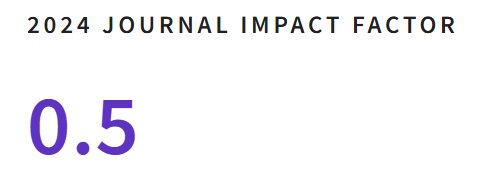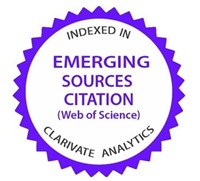Agricultural Culture and Technological Civilization: Tarpuy and Artificial Intelligence in Coffee Disease Management
DOI:
https://doi.org/10.35588/8ajmqd10Keywords:
agricultural culture, technological civilization, artificial intelligence, coffee diseaseAbstract
Bringing innovation to the agricultural sector contributes to the strengthening of technological culture and civilization. Therefore, the objective of this study was to design and evaluate the Tarpuy mobile application model, based on artificial intelligence, to enhance decision-making in the diagnosis and control of diseases in coffee crops, in the community of Viza. The study adopted a mixed approach, with a quasi-experimental design. The sample was made up of 108 farmers, surveys and interviews were applied to determine the cultural relationship and technological perception in farmers. The results in the pre-test, regarding the recognition of the borer and yellow rust were 15% and 25% respectively, while the self-management of the treatment reached 35%, the dependence on professional help reached 70% and the use of mobile applications 2%. After the implementation of Tarpuy, these indicators in the post-test were modified, showing significant improvements; thus, the recognition of the drill bit increased to 75%, the yellow rust 88%, the self-management of the treatment 68%, and professional help decreased to 10%, use of mobile applications reached 100%. The hypothesis testing confirmed that the Tarpuy application has a significant influence on coffee disease management.
Downloads
References
Bonfil, G. (1991). La teoría del control cultural en el estudio de procesos étnicos. Anuario Antropológico, 86(86), 13-53.
Che, Y. y Duan, F. (2020). Cultural Roots for the Evolution of Wilderness and the Anxieties of Urban Living. Environmental Ethics, 42(3), 267-278. DOI https://doi.org/10.5840/enviroethics202042325
Chen,Y.A., Hsieh, W.H., Ko, Y.S. y Huang, N.F. (13 al 16 de enero de 2021). An Ensemble Learning Model for Agricultural Irrigation Prediction. En International Conference on Information Networking (pp. 311-316). Isla Jeju, Corea del Sur. DOI https://doi.org/10.1109/ICOIN50884.2021.9333852
FAO (2015). Construyendo una visión común para la agricultura y alimentación. Organización de las Naciones Unidas para la Alimentación y la Agricultura. https://surl.li/mmtotq
Gabryś, B. y Kordan, B. (2022). Cultural Control and Other Non-Chemical Methods. En A. Alyokhin, S.I. Rondon y Y. Gao (Eds.), Insect Pests of Potato: Global Perspectives on Biology and Management (pp. 297-314). Elsevier. DOI https://doi.org/10.1016/B978-0-12-821237-0.00006-8
Junta Nacional del Café (JNC) (3 de febrero de 2023). Producción peruana de café alcanzó las 234.200 toneladas en 2022, mostrando una caída de 14%. Junta Nacional del Café. https://surl.li/iaqpat
Kahasha, E.I. y Zuva, T. (24 a 25 de septiembre de 2020). Mobile Crowdsourcing in Crop Production for Farmers in Rural Areas of the South Kivu (DRC). Iconic 2020 International Conference on Intelligent and Innovative Computing Applications. Association for Computing Machinery. Nueva York, Estados Unidos. DOI https://doi.org/10.1145/3415088.3415094
Koval, V. et al. (2023). Improvement of the Optimization Method Based on the Cat Pack Algorithm. Eastern-European Journal of Enterprise Technologies, 1(9(121)), 41-48. DOI https://doi.org/10.15587/1729-4061.2023.273786
MOCCA (2022). Menos enfermedades y plagas. MOCCA.
Panjagal, S.B., Harinath, V., Ramaiah, G.N.K. y Karthik, R. (2019). Design of Farmer Friendly Intelligent System to Monitor and Control the Parameters in Precision agriculture. International Journal of Recent Technology and Engineering, 7(5), 70-73.
Peng, J., Liu, Z., Liu, X., Yan, J., Sun, D. y Nevo, E. (2021). Evolutionary Agriculture Domestication of Wild Emmer Wheat. En S. Wasser y M. Frenkel-Morgenstern (Eds.), New Horizon in Evolution (pp. 193-255). Elsevier. DOI https://doi.org/10.1016/B978-0-323-90752-1.00007-9
Phasinam, K., Kassanuk, T. y Shabaz, M. (2022).Applicability of Internet of Things in Smart Farming. Journal of Food Quality, 2022, 7692922. DOI https://doi.org/10.1155/2022/7692922
Silva, P.C., Souza, V.C.O., Volpato, M.M.L. y Silva, V.A. (16 al 19 de mayo de 2022). Regador: APP for Coffee Water Potential Estimation. In SBSI’22 Proceedings of the XVIII Brazilian Symposium on Information Systems. Curitiba, Brasil. DOI https://doi.org/10.1145/3535511.3535545
Sitikarn, B., Kankaew, K., Sawangdee,Y. y Pathan, A. (2022). Coffee Value Symbiosis Toward a Mountain Geographical Community Based Tourism In Thailand. Geojournal of Tourism and Geosites, 42(2), 657-663. DOI https://doi.org/10.30892/gtg.422spl03-874
Thar, S.P., Ramilan, T., Farquharson, R.J., Pang, A. y Chen, D. (2021). An Empirical Analysis of the Use of Agricultural Mobile Applications among Smallholder Farmers in Myanmar. Electronic Journal of Information Systems in Developing Countries, 87(2), e12159. DOI https://doi.org/10.1002/isd2.12159
Trajman, A. y Luiz, R.R. (2008). McNemar χ2 Test Revisited: Comparing Sensitivity and Specificity of Diagnostic Examinations. Scandinavian Journal of Clinical and Laboratory Investigation, 68(1), 77-80. DOI https://doi.org/10.1080/00365510701666031
UNESCO (2000). Paisaje arqueológico de las primeras plantaciones de café en el sudeste de Cuba. UNESCO. https://whc.unesco.org/es/list/1008
Williams-Guillén, K. y Otterstrom, S. (2014). Market-Based Incentives for the Conservation of Ecosystem Services in Agricultural Landscapes: Examples from Coffee Cultivation in Latin-America. En N. Van Alfen (Ed.), Encyclopedia of Agriculture and Food Systems (pp. 172-185). Elsevier. DOI https://doi.org/10.1016/B978-0-444-52512-3.00011-5
Yu, M. (2021). Ecological Civilization—The Chinese Path. En P. Jiahua, S. Gao, Q. Li, J. Wang, D. Wu y C. Huang (Eds.), Beautiful China: 70 Years Since 1949 and 70 People’s Views on Eco-civilization Construction (pp. 517-526). Springer Singapore. DOI https://doi.org/10.1007/978-981-33-6742-5_51
Zhang, L. (2021). Practice and Thinking of Traditional Chinese Medicine Agriculture Helping Rural Revitalization. Research on World Agricultural Economy, 2(3),49-56. DOI https://doi.org/10.36956/rwae.v2i3.428
Downloads
Submitted
2023-11-11Published
Issue
Section
License
Copyright (c) 2025 RIVAR

This work is licensed under a Creative Commons Attribution 4.0 International License.









